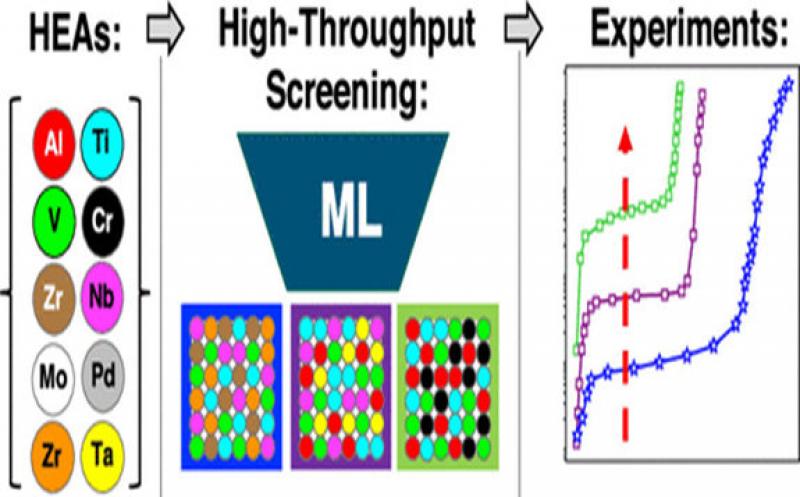Researchers from Sandia National Laboratories and international collaborators used computational approaches, including explainable machine learning models, to elucidate new high-entropy alloys with attractive hydrogen storage properties and direct laboratory synthesis and validation.

Vitalie Stavila, Mark Allendorf, Matthew Witman and Sapan Agarwal are part of the Sandia team that published a paper in conjunction with researchers from Ångström Laboratory in Sweden and Nottingham University in the United Kingdom in the ACS journal Chemistry of Materials detailing the approach.
Having a data-driven modeling capability to predict thermodynamic properties can rapidly increase the speed of research. Once constructed and trained, such machine learning models only take seconds to execute and can therefore rapidly screen new chemical spaces: in this case 600 materials that show promise for hydrogen storage and transmission.
The team also found that these high-entropy alloy hydrides could enable a natural cascade compression of hydrogen as it moves through the different materials, said Stavila. Compressing hydrogen is traditionally done through a mechanical process. This finding could have significant implications for small-scale hydrogen generation at hydrogen fuel-cell filling stations.
Hydrogen produced under atmospheric conditions at sea level has a pressure of about 1 bar. Hydrogen at a fuel-cell charging station must have a pressure of 800 bars or higher so that it can be dispensed as 700-bar hydrogen into fuel-cell hydrogen vehicles.
Stavila described building a storage tank with multiple layers of these different alloys. As hydrogen is pumped into the tank, the first layer compresses the gas as it moves through the material. The second layer compresses it even further and so on through all of the layers of differing alloys.
The team is still refining the model but, since the database is already public through the Department of Energy, once the method is better understood, using machine learning could lead to breakthroughs in a myriad of fields, including materials science, Agarwal said.
This research was sponsored by the Hydrogen and Fuel Cell Technologies Office within the US Department of Energy, Office of Energy Efficiency and Renewable Energy and through Sandia’s Laboratory Directed Research and Development program.